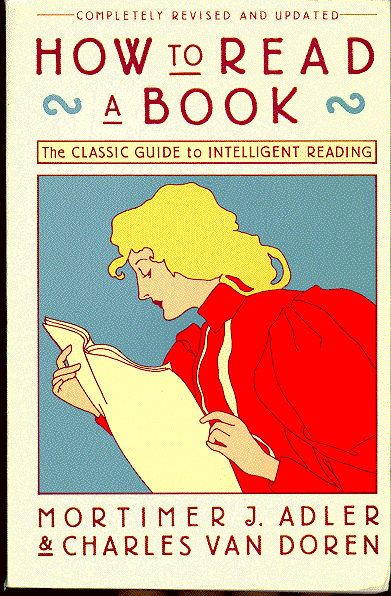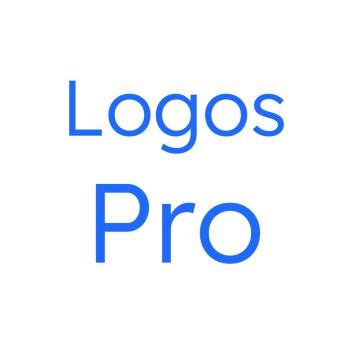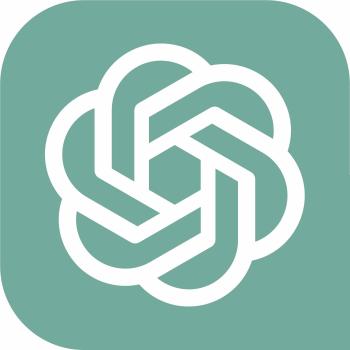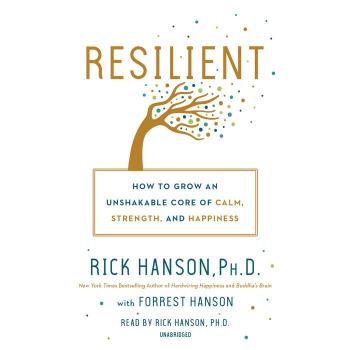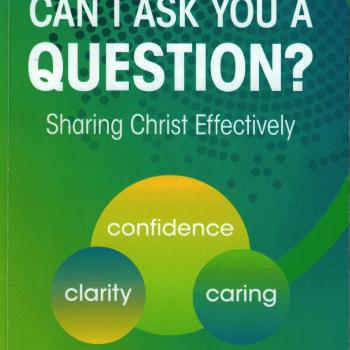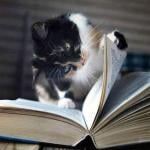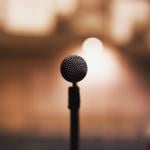How to Read a Book by Mortimer J. Adler and Charles Van Doren
How to Read a Book by Mortimer J. Adler and Charles Van Doren is a book that gives the reader a guide to intelligent reading.
The book entitled How to Read a Book is a useful analysis about how to read a variety of books well. The book describes the four levels of reading that a person must use in order to get the most of every book you read. I understand that the point of this book was to show me how to thoroughly digest a book before I use it as a resource in writing a research paper.
As someone who has written a book, I found some of the points very interesting. I sensed that I could use this information later when I write another book. The book helped me see how I can “converse” with the reader. As a potential doctoral student, this book revealed what I needed to do to get the most out of every book I would use.
Part One defines the art of reading, and then proceeds to the levels of reading. The book essentially states that in order for a book to be well-read, it needs to be read at least four different times, in four different ways. The first level of reading is called “elemental reading.” The book spends too many pages in my opinion on the subject “how we learn to read” when it speaks of elemental reading. The book digresses into an analytical history of the teaching of elementary reading in chapter three. It then spends time describing how a child learns to read. To help the reader from getting confused, the book makes the distinction between the levels of reading and the “stages” of reading (which are all included in the elementary level.) The second level of reading is called inspectional reading. Inspectional reading is the kind in which we look at all parts of a book to get an idea about the type of book we are reading. I agree that this is very helpful in research, as it can help the researcher sift out bad source material before investing too much time reading the material.
Before proceeding to the third level of reading, the authors presents four questions that should be asked when reading any book. They are: (1) What is the book about as a whole? (2) What is being said in detail and how? (3) Is the book true, in whole or part? (4) What of it?
Each of these questions will be used later in the book as a guide to discover useful information about any book a person may read. Answering these four questions is the essence of what this book is about. If a reader can answer these four questions to a book, then they have gathered the most important information they need from that book.
Part Two discusses about the third level of reading, called analytical reading. For seven chapters, the authors provides ideas and techniques about how to really understand what a book is all about. Such techniques such as pigeonholing (classifying a book into practical and theoretical books) and x-raying a book (finding the unity of a book, and then outlining the book) help a reader get the most information out of book that can be used for research and writing. Analytical reading includes learning how to come to terms with an author, find the author’s message, criticizing the book, and as well as agreeing or disagreeing with the author.
Part Two ends with a chapter entitled “Aids to Reading”. This was for me the most useful chapter of the entire book. The authors describe ways to use commentaries, abstracts, dictionaries and encyclopedias. Of course, one could now use these same resources on the Internet. But no matter which form these resources take, they can be very helpful in writing papers.
Part Three lists the approaches to different kinds of reading matter. It describes how to read books ranging from practical books, to books about philosophy and social science. This section contained many helpful hints on what to look for when reading these kinds of books. The same four questions that are presented in general to answer book in Part One are applied to practical books, imaginative literature, stories, plays, poems, as well as book about history, science, mathematics philosophy, and social science.
Part Four discusses the fourth level of reading synoptic reading. The ultimate goal of reading, which is the growth of the mind, happens best at this level. The idea of synoptic reading is interesting, but its use would be limited mostly to researchers of a specific topic. As a research writer, I agree that synoptic reading in time would be helpful in accumulating a large set of sources about a topic. The idea of a synopticon, a reference book that indexes all of the books in a topical fashion, could be useful. However, I doubt that it could be accomplished. There are simply too many books to index.
The authors present reading as the legitimate alternative to radio and television for the growth of the mind. A mind is active they say, when a person is reading a book. Therefore, a person will learn more from a book, than from something in another medium. However, since this book was written, many studies have been made about learning styles. Some people learn and remember more from a visual medium – like television, and some people learn better and remember more from an audio medium – like radio. So I wonder if a person could learn just as much from a documentary on television, or an interview on the radio, without having to consult a book.
While reading this book, I wanted to give it the title How Long It Takes to Read a Book. Not only was it a very difficult book to read, but I found the levels of reading a laborious process to understand. I understand that the authors are basically saying that we need to take different approaches and methods to read the book. Yet, it would have been better to say this idea in fewer words. Using these levels will help the research thoroughly understand the book. However, I found the writer took too many words to describe this process.
The recommended reading list in Appendix A is a good resource. For the general reader, this appendix is a great resource. I think it can benefit anyone who likes to read books. For the researcher, the four questions to use when reading a book will be useful. The techniques on how to use these questions for all kinds of books will help a researcher get the most out of their source material. However, other than that, the benefits of reading this book are limited. A person has to really like to read, and be able to read books well in order to benefit from the ideas presented in this book. Of course, this book is useful for doctoral students. But it may also benefit the general university student who needs to learn how to do real research using books as primary source material.


